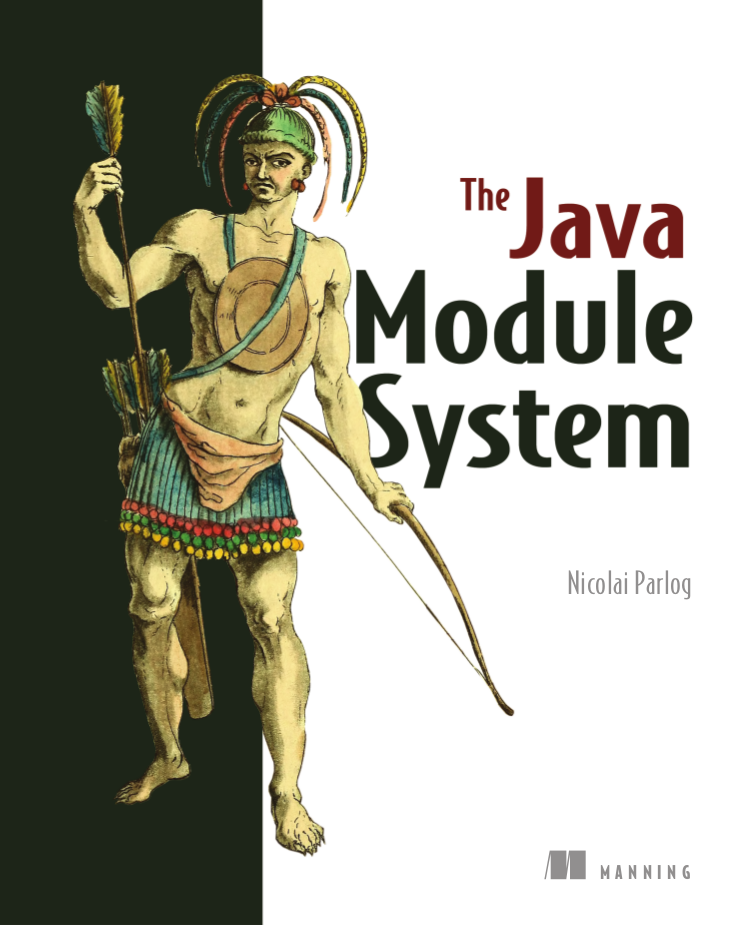try (var executor = Executors
.newVirtualThreadPerTaskExecutor()) {
for (int i = 0; i < 1_000_000; i++) {
var number = i;
executor.submit(() -> {
Thread.sleep(Duration.ofSeconds(1));
return number;
});
}
} // executor.close() is called implicitly, and waitsScaling Simply
With Virtual Threads
Lots to talk about!
| Virtual Threads |
| Preparing Your Code |
| Structured Concurrency |
| Project Loom |
Slides: slides.nipafx.dev/virtual-threads
Code: github.com/nipafx/loom-lab
Scaling Simply
| Virtual Threads |
| Preparing Your Code |
| Structured Concurrency |
| Project Loom |
A simple web request
Imagine a hypothetical HTTP request:
interpret request
query database (blocks)
process data for response
Resource utilization:
good for 1. and 3.
really bad for 2.
How to implement that request?
Synchronous
Align application’s unit of concurrency (request)
with Java’s unit of concurrency (thread):
use thread per request
simple to write, debug, profile
blocks threads on certain calls
limited number of platform threads
⇝ bad resource utilization
⇝ low throughput
Asynchronous
Only use threads for actual computations:
use non-blocking APIs (futures / reactive streams)
harder to write, challenging to debug/profile
incompatible with synchronous code
shares platform threads
⇝ great resource utilization
⇝ high throughput
Conflict!
There’s a conflict between:
simplicity
throughput
Nota Bene
There are other conflicts:
design vs performance (⇝ Valhalla)
explicitness vs succinctness (⇝ Amber)
flexibility vs safety (⇝ Panama)
dynamism vs performance (⇝ Leyden)
Enter virtual threads!
A virtual thread:
is a regular
Threadlow memory footprint ([k]bytes)
small switching cost
scheduled by the Java runtime
requires no OS thread when waiting
Virtual things
Virtual memory:
maps large virtual address space
to limited physical memorygives illusion of plentiful memory
Virtual threads:
map large number of virtual threads
to a small number of OS threadsgive the illusion of plentiful threads
Virtual things
Programs rarely care about virtual vs physical memory.
Programs need rarely care about virtual vs platform thread.
Instead:
write straightforward (blocking) code
runtime shares available OS threads
reduces the cost of blocking to near zero
Example
Example
This laptop:
Intel i7-1165G7 (11th Gen)
8GB for JVM (32 GB total RAM)
Gentoo Linux (kernel v6.5.10)
Extremely rough measurements:
#threads | 1k | 10k | 100k | 500k | 1m | 5m |
run time | 1.0s | 1.1s | 1.3s | 3s | 6s | 20s |
Effects
Virtual threads:
remove "number of threads" as bottleneck
match app’s unit of concurrency to Java’s
⇝ simplicity && throughput
Performance
Virtual threads aren’t "faster threads":
same number of CPU cycles
each task takes the same time (same latency)
So why bother?
Parallelism vs concurrency
| Parallelism | Concurrency | |
|---|---|---|
Task origin | solution | problem |
Control | developer | environment |
Resource use | coordinated | competitive |
Metric | latency | throughput |
Abstraction | CPU cores | tasks |
# of threads | # of cores | # of tasks |
Performance
When workload is not CPU-bound:
start waiting as early as possible
for as many tasks as possible
⇝ Virtual threads increase throughput:
when workload is not CPU-bound
when number of concurrent tasks is high
Server How-To
For servers:
request handling threads are started by web framework
frameworks will offer (easy) configuration options
We’re not there yet.
Spring Boot
Starting with version 3.2:
spring.threads.virtual.enabled=trueQuarkus
Annotate request handling method:
@GET
@Path("api")
@RunOnVirtualThread
public String handle() {
// ...
}(Requires --add-opens java.base/java.lang=ALL-UNNAMED.)
Virtual Threads
Go forth and multiply (your threads)
Scaling Simply
| Virtual Threads |
| Preparing Your Code |
| Structured Concurrency |
| Project Loom |
Preparing your code
Virtual threads:
always work correctly
may not scale perfectly
Code changes can improve scalability
(and maintainability, debuggability, observability).
Avoid thread pools
Only pool expensive resources
but virtual threads are cheap.
⇝ Replace thread pools (for concurrency),
with virtual threads plus, e.g., semaphores.
With thread pools
// limits concurrent queries but pools 👎🏾
private static final ExecutorService DB_POOL =
Executors.newFixedThreadPool(16);
public <T> Future<T> queryDatabase(Callable<T> query) {
return DB_POOL.submit(query);
}With semaphore
// limits concurrent queries without pool 👍🏾
private static final Semaphore DB_SEMAPHORE =
new Semaphore(16);
public <T> T queryDatabase(Callable<T> query)
throws Exception {
DB_SEMAPHORE.acquire();
try {
return query.call();
} finally {
DB_SEMAPHORE.release();
}
}Caveats
To understand virtual thread caveats
we need to understand how they work.
(Also, it’s very interesting.)
Under the hood
The Java runtime manages virtual threads:
runs them on a pool of carrier threads
on blocking call:
internally calls non-blocking operation
unmounts from carrier thread!
when call returns:
mounts to (other) carrier thread
continues
Stack chunks
A virtual thread stack:
when waiting, is stored on heap (stack chunk objects)
when continuing, is lazily streamed to stack
This keeps switching cheap.
The simple web request
Remember the hypothetical request:
interpret request
query database (blocks)
process data for response
In a virtual thread:
runtime submits task to carrier thread pool
when 2. blocks, virtual thread unmounts
runtime hands carrier thread back to pool
when 2. unblocks, runtime resubmits task
virtual thread mounts and continues with 3.
Configuration
Carrier thread pool size
can be configured:
-Djdk.virtualThreadScheduler.maxPoolSize=…
Let’s measure Thread::sleep again:
remember that this is a pointless benchmark
executed on a laptop!
"Benchmark"
Carrier (rows) vs virtual (columns) threads:
1k | 10k | 100k | 500k | 1m | |
1 | 1.0s | 1.1s | 1.7s | 6s | 12s |
2 | 1.0s | 1.1s | 1.5s | 4s | 9s |
4 (CPU cores) | 1.0s | 1.1s | 1.3s | 3s | 6s |
8 (CPU threads) | 1.0s | 1.1s | 1.3s | 3s | 6s |
16+ | 1.0s | 1.1s | 1.3s | 3s | 6s |
Compatibility
Virtual threads work correctly with everything:
all blocking operations
synchronizedThread,currentThread, etc.thread interruption
thread-locals
native code
But not all scale perfectly.
Caveat #1: capture
Caveat #2: pinning
Some operations pin (operations don’t unmount):
native method call (JNI)
foreign function call (FFM)
synchronizedblock (for now)
⇝ No compensation
⚠️ Problematic when:
pinning is frequent
contains blocking operations
Avoid long-running pins
If possible:
avoid pinning operations
remove blocking operations
from pinning code sections.
With synchronization
// guarantees sequential access, but pins (for now) 👎🏾
public synchronized String accessResource() {
return access();
}With lock
// guarantees sequential access without pinning 👍🏾
private static final ReentrantLock LOCK =
new ReentrantLock();
public String accessResource() {
// lock guarantees sequential access
LOCK.lock();
try {
return access();
} finally {
LOCK.unlock();
}
}Caveat #3: thread locals
Thread-locals can hinder scalability:
can be inherited
to keep them thread-local,
values are copiedcan occupy lots of memory
(There are also API shortcomings.)
⇝ Refactor to scoped values (JEP 446).
With thread-local
// copies value for each inheriting thread 👎🏾
static final ThreadLocal<Principal> PRINCIPAL =
new ThreadLocal<>();
public void serve(Request request, Response response) {
var level = request.isAdmin() ? ADMIN : GUEST;
var principal = new Principal(level);
PRINCIPAL.set(principal);
Application.handle(request, response);
}With scoped value
// immutable, so no copies needed 👍🏾
static final ScopedValue<Principal> PRINCIPAL =
new ScopedValue<>();
public void serve(Request request, Response response) {
var level = request.isAdmin() ? ADMIN : GUEST;
var principal = new Principal(level);
ScopedValue
.where(PRINCIPAL, principal)
.run(() -> Application
.handle(request, response));
}Preparing your code:
Most importantly:
replace thread pools with semaphores
Also helpful:
remove long-running I/O from pinned sections
replace thread-locals with scoped values
replace
synchronizedwith locks
Scaling Simply
| Virtual Threads |
| Preparing Your Code |
| Structured Concurrency |
| Project Loom |
Unlocking the full potential
Virtual threads are cheap and plentiful:
no pooling necessary
allows thread per task
allows liberal creation
of threads for subtasks
⇝ Enables new concurrency programming model.
A first step
Whenever you need concurrent subtasks,
spawn virtual threads for each:
private static final ExecutorService VIRTUAL =
Executors.newVirtualThreadPerTaskExecutor()
void handle(Request request, Response response)
throws InterruptedException {
var taskA = VIRTUAL.submit(this::doA);
var taskB = VIRTUAL.submit(this::doB);
response.send(taskA.get() + taskB.get());
}But we can do (much) better!
Structured programming
Emerged when the sea of statements and GOTOs
became unmaintainable:
prescribes control structures
prescribes single entry point
and clearly defined exit pointsinfluenced languages and runtimes
The stricter approach made code (much) clearer!
Unstructured concurrency
private static final ExecutorService VIRTUAL =
Executors.newVirtualThreadPerTaskExecutor()
void handle(Request request, Response response)
throws InterruptedException {
// what's the relationship between
// this and the two spawned threads?
// what happens when one of them fails?
var taskA = VIRTUAL.submit(this::doA);
var taskB = VIRTUAL.submit(this::doB);
// what if we only need the faster one?
response.send(taskA.get() + taskB.get());
}Structured concurrency
When the flow of execution splits
into multiple concurrent flows,
they rejoin in the same code block.
⇝ Thread lifecycle is simple:
starts when task begins
ends on completion
⇝ Enables parent-child/sibling relationships
and logical grouping of threads.
Structured concurrency
void handle(Request request, Response response)
throws InterruptedException {
// define explicit success/error handling
try (var scope = new StructuredTaskScope
.ShutdownOnFailure()) {
var taskA = scope.fork(this::doA);
var taskB = scope.fork(this::doB);
// wait explicitly until success criteria met
scope.join();
scope.throwIfFailed();
response.send(taskA.get() + taskB.get());
} catch (ExecutionException ex) {
response.fail(ex);
}
}Benefits
success/failure policy can be defined
across all childrencreate your own (explicit) policies
forked tasks are children of the scope
creates relationship between threads
Observability
Every task scope thread knows its parent!
During debugging/analyzing, you can:
navigate that thread’s stack
navigate to its parent thread
GOTO 1
A task’s entire context is visible.
Scaling Simply
| Virtual Threads |
| Preparing Your Code |
| Structured Concurrency |
| Project Loom |
Project Loom
JVM features and APIs for supporting easy-to-use, high-throughput, lightweight concurrency and new programming models
Profile:
launched January 2018
led by Ron Pressler
Project Loom
Virtual threads:
code is simple to write, debug, profile
better scalibility / higher throughput
Structured concurrency:
clearer concurrency code
simpler failure/success policies
better debugging
Deeper Dives
So long…
More
Slides at slides.nipafx.dev⇜ Get my book!
Follow Nicolai
nipafx.dev/nipafx
Follow Java
inside.java // dev.java/java // /openjdk



